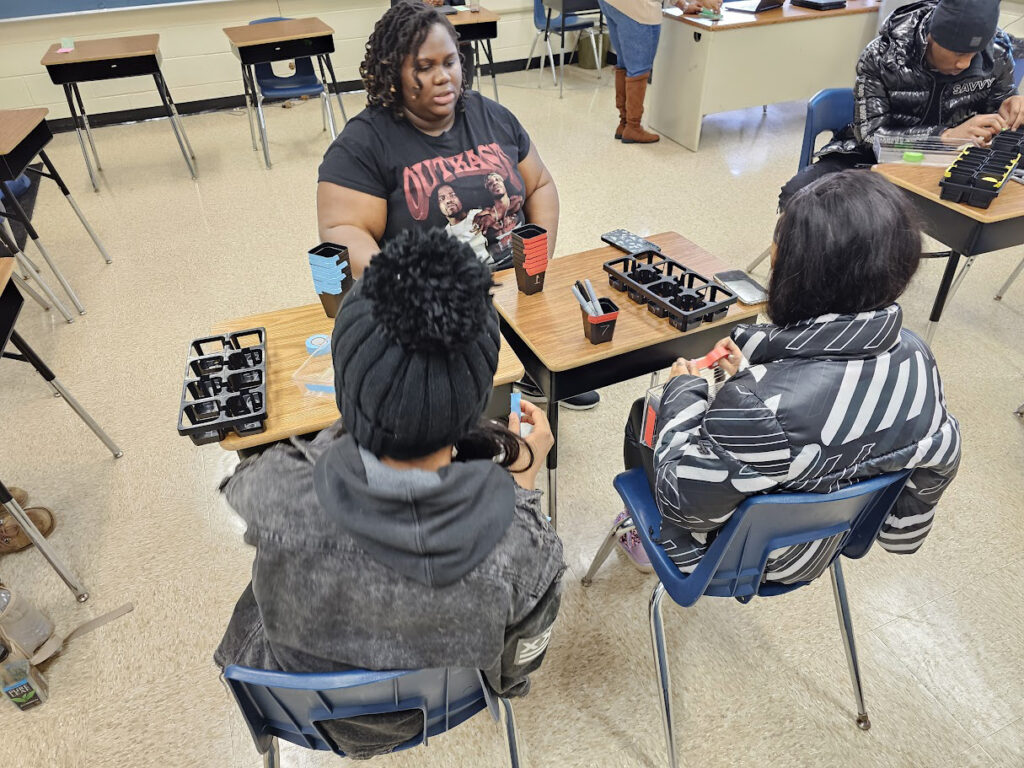by Kristen Goodhue

What does it take to grow an endangered orchid and bring it back to the wild? This past school year, the Smithsonian decided to ask hundreds of middle and high school students. It’s part of a participatory science project called “Classroom Cultivation,” run by the Smithsonian Environmental Research Center (SERC) and Smithsonian Gardens. Its goal: Turn students into scientists and classrooms into botany labs.
Orchids are some of the trickiest plants to grow—either in a lab or in the wild. This is largely because they are so frustratingly picky about their habitats. And every species has a different wish list.
“Orchids can be a bit of a drama queen, a diva,” said Shatiyana Dunn, who runs Classroom Cultivation for SERC. “They have very specific elements that they like to grow in.”
This year Dunn worked with nine schools in Maryland and the District of Columbia. Each classroom received 32 orchid seedlings. They all belonged to the same species: the tuberous grass pink orchid, or Calopogon tuberosus. It prefers to grow in damp meadows and grasslands across eastern North America. When it blooms, a single plant can boast up to 25 magenta or white flowers. But in Maryland, the grass pink orchid has become endangered, a victim of habitat loss and overzealous collectors. It has disappeared entirely from the District of Columbia.

The Classroom Cultivation students are helping discover what soil type helps the orchid grow best. Dunn supplied them with four soils to test: a complex soil with sphagnum moss, wood chips and other coarse materials, a finely milled soil, and versions of both soils combined with fungi. Many orchids depend on fungi for nutrition for their entire lives, so scientists suspect they are a critical ingredient. The trick is knowing which fungi the grass pink orchid needs.
The classrooms sent their data to Melissa McCormick, SERC plant ecologist and director of the North American Orchid Conservation Center. McCormick is using the students’ discoveries to determine how to best grow the orchids in lab, with the hope of eventually returning them to the wild.

“There’s not a lot of programs out here where the lead researchers are trusting the students to do that citizen science piece, to actually be contributing to the project,” said science educator Delonta Davis. “And that’s very exciting.”
Davis teaches 6th-grade science at Maryland’s Gwynn Park Middle School. His classrooms have teamed up with SERC on participatory science projects like this since 2014. This past academic year, he brought Classroom Cultivation to over 100 students divided into four classes.
Throughout the school year, students recorded the plants’ height, the number of leaves and the number of any flowers that emerged. Davis’ students added a few extra elements, including personal “orchid research journals” where they jotted down their own observations every week.
But his classroom encountered another surprise—one many scientists are all too familiar with.
“None of our plants grew. None of them,” Davis said. It caused some anxiety among the students. “After a while the kids are starting to get worried….What’s going on? Did we do something wrong?”
However, when Dunn heard the news, she wasn’t worried. To her mind, it’s all useful data, and knowing what doesn’t work is just as important as knowing what does.
“There’s no such thing as failure….It’s about discovery,” Dunn said. “Even noes will sometimes tell you a lot more than yesses.”


Left: Hooded ladies’ tresses, Spiranthes romanzoffiana. (Credit: Kallum McDonald, via iNaturalist) Right: Tuberous grass pink orchid, Calopogon tuberosus. (Credit: Charlie O’Brien, via iNaturalist)
This January, Classroom Cultivation will expand to Delaware, Minnesota and Alaska. They’ll study a different orchid: ladies’ tresses, or Spiranthes, an elegant group of orchids that can have dozens of tiny flowers spiraling up their stems. Each classroom will work with a ladies’ tresses species native to their region. They’ll team up with local botanical centers: the Minnesota Landscape Arboretum, Mt. Cuba Center in Delaware and the Kachemak Bay National Estuarine Research Reserve in Alaska.
As for the grass pink orchids? They seem to like the uber-complex soil mix with materials like sand, peat and sphagnum moss. McCormick’s team is duplicating the experiment to see if they need anything else to satisfy this finnicky orchid.

